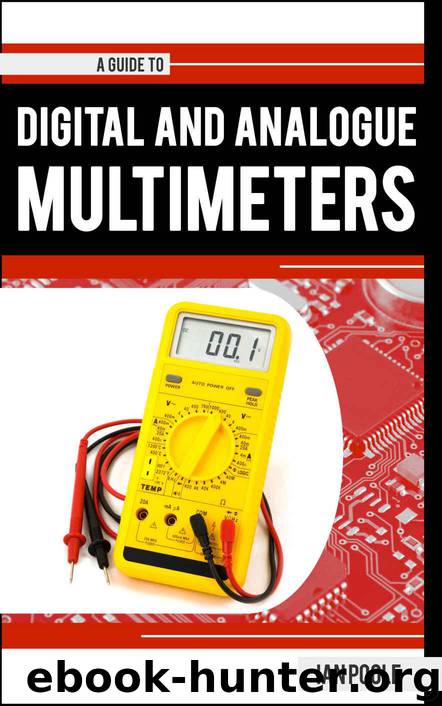A Guide to Digital & Analogue Multimeters by Poole Ian

Author:Poole, Ian [Poole, Ian]
Language: eng
Format: azw3
Publisher: Adrio Communications Ltd
Published: 2015-06-07T16:00:00+00:00
How a DMM works
The operation of a digital multimeter is relatively straightforward, although there are obviously differences between the actual implementation from different manufacturers.
A typical DMM
The key process that occurs within a digital multimeter for any measurement that takes place is that of voltage measurement. All other measurements are derived from this basic measurement.
Accordingly the key to understanding how a digital multimeter works is in understanding this process.
There are many forms of analogue to digital converter, ADC. However the one that is most widely used in DMMs is known as the successive approximation register or SAR. Some SAR ADCs may only have resolution levels of 12 bits, but those used in test equipment including DMMs generally have 16 bits or possibly more dependent upon the application. Typically resolution levels of 16 bits are used, with speeds of 100k samples per second. These levels of speed are more than adequate for most DMM applications, where high levels of speed are not normally required.
Download
This site does not store any files on its server. We only index and link to content provided by other sites. Please contact the content providers to delete copyright contents if any and email us, we'll remove relevant links or contents immediately.
| Circuits | Digital Design |
| Electric Machinery & Motors | Electronics |
| Fiber Optics | Networks |
| Superconductivity |
Whiskies Galore by Ian Buxton(41941)
Introduction to Aircraft Design (Cambridge Aerospace Series) by John P. Fielding(33094)
Small Unmanned Fixed-wing Aircraft Design by Andrew J. Keane Andras Sobester James P. Scanlan & András Sóbester & James P. Scanlan(32766)
Craft Beer for the Homebrewer by Michael Agnew(18198)
Turbulence by E. J. Noyes(7981)
The Complete Stick Figure Physics Tutorials by Allen Sarah(7339)
Kaplan MCAT General Chemistry Review by Kaplan(6903)
The Thirst by Nesbo Jo(6882)
Bad Blood by John Carreyrou(6584)
Modelling of Convective Heat and Mass Transfer in Rotating Flows by Igor V. Shevchuk(6408)
Learning SQL by Alan Beaulieu(6239)
Weapons of Math Destruction by Cathy O'Neil(6219)
Man-made Catastrophes and Risk Information Concealment by Dmitry Chernov & Didier Sornette(5957)
Digital Minimalism by Cal Newport;(5706)
Life 3.0: Being Human in the Age of Artificial Intelligence by Tegmark Max(5518)
iGen by Jean M. Twenge(5387)
Secrets of Antigravity Propulsion: Tesla, UFOs, and Classified Aerospace Technology by Ph.D. Paul A. Laviolette(5335)
Design of Trajectory Optimization Approach for Space Maneuver Vehicle Skip Entry Problems by Runqi Chai & Al Savvaris & Antonios Tsourdos & Senchun Chai(5039)
Pale Blue Dot by Carl Sagan(4960)
